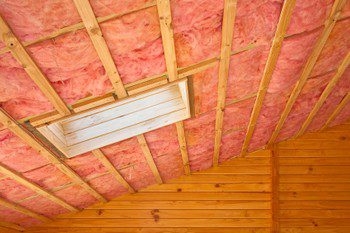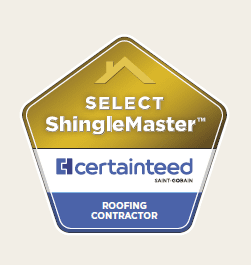There are many Milwaukee home insulation types to choose from, but ultimately your choice will be dependent on the followings:
• The location of your Milwaukee household will be assigned an R-value as defined by the local building codes. The R-values vary greatly across the country, for example, somebody in Maine would have his minimum required R-value different from someone in Arizona. All builders should be aware of the local requirements. In Wisconsin, the values read R-19 for floors and walls, whereas the higher R-30s to R-40s are applicable for roofs. For milder climate locations, the minimum values for floors/walls and ceilings are R-10/ R-11, and R-19 respectively.
• If there is any ductwork running on your attic (the presence of attic ductwork would call for more stringent insulation in the ceiling).
• Framing style of your household
Home insulation types that satisfy higher R-values ensure that summer is kept cool and winter is warm.
For the purpose of maximum energy efficiency, it is advisable that you consider an R-value that is 50% upward of the minimum required. However, do it with practical sense. Do not just trust the builder or yourself to apply very high R-value insulation onto any space indiscriminately. Read the manufacturer’s recommendations instead.
Essentially there are two home insulation types: moisture movement-friendly and not. The type that prohibits any form of moisture movement is referred to as closed-cell foam. The type that allows comes in these three forms:
- Loose fil
- Batt
- Open-cell foam
Loose Fil Insulation
Loose-fill consists of fine particles of foam, fiber, fiberglass, mineral wool, slag wool, rock wool, or cellulose. The insulation is applied by using pneumatic guns to blow these particles into a home’s ceiling, walls, or attic.
- Fiberglass is made up of 20% – 30% recycled glass alongside other natural ingredients like sand.
- Mineral wool is primarily made up of recycled by-products from industrial production.
- Rock wool is a combination of blast furnace slag, aluminosilicate rock (usually basalt), and dolomite or limestone.
Slag wool is actually derived from the waste in steel manufacturing. Both slag and rock wool insulations are said to be more environmentally friendly because they re-use waste or by-products materials from other processes, that would otherwise end up in a landfill. Additionally, they require less energy to be produced, according to manufacturers. Slag and rock wool insulation provides effective absorbent capacity and noted for being bacteria and mold resistant, non-inflammable as well as non-combustible.
Cellulose insulation is widely recognized as the “green” home insulation type; for its composition of recycled newspaper and natural wood. As the insulation is applied through blowing pneumatic air (instead of the conventional approach of laid sheets), it fits easily into tight, odd corners (such as around pipes). It offers the highest R-value among its peers. However, for blown-in insulation, the R-value can only be measured after the insulation has been completed. The added bonus of cellulose is that it has chemical additives that are fire-retardant, earning itself a class-1 fire rating. Cellulose insulation has to comply with the standards of the Consumer Products Safety Commission. Numerous testing laboratories have also been conducted to establish certification programs for cellulose installation material quality and installation procedures conform to the standards published by the government and industry. The National Association of Home Builders National Research Center is the body responsible for such certifications.
If you have completed your framing, it may still not be too late to reap the benefit from this home insulation type. Start by making incisions between the walls studs, then follow up with the blow-in process into the holes, and finally have the holes sealed off. Please check with your builder or a qualified professional for additional help.
Remember that the R-value of cellulose insulation will not stay static throughout its life span, thus, more cellulose will need to be added from time to time to make necessary compensations for this settling.
Batt Insulation
The conventional fiberglass type home insulation has the fiberglass (comes in rolls form that are long and pre-cut) positioned between the walls studs, on the floor, or spread out across the ceiling. Mishandling is a major cause of losing effectiveness. Studies from California Energy Commission have suggested that even a half-inch gap is likely to bring the efficiency down by 50 percent!
Options for fiberglass batt insulation are abound, talk to your local builder on what works best for you.
Open Cell Foam
Open-cell foam insulation belongs to the soft insulation category. The supplied materials are cut into sheets to fit spaces or be sprayed into corners (takes just a few minutes to cure). The R-value is determined by the corresponding thickness of these sheets. This type of home insulation is typically applied in basements and beneath the vinyl siding.
Denim, Cotton, and Soy
Happen to have blue jeans or cotton T-shirts that are over their use-by dates? These are excellent alternatives to make your home comfy and cozy and save you a lot on energy use for cooling and heating. This has become a fast-catching alternative among the public.
Recycled jeans ‘inspired’ cotton insulation is formaldehyde- and asbestos-free; so it does not adversely affect the nose, skin, and throat; best of all, it has excellent heat-holding properties; additionally, it is a relatively good sound absorbent because of its heavier nature.
Denim insulation offers flexibility in applications: rolls, batts, or blow-in. This is a more expensive home insulation type than conventional fiberglass insulation, but it might still be worthwhile considering its advantages.
Soy-based spray foam insulation is a newcomer to the scene and can get pricey, but is gradually gaining traction. It uses American-grown soybeans as source material (thus renewable) and capable of expanding up to 100 times its original volume all spaces and corners will be completely filled. Additionally, It is highly resistant to mold, moisture, rodents, or insects.




